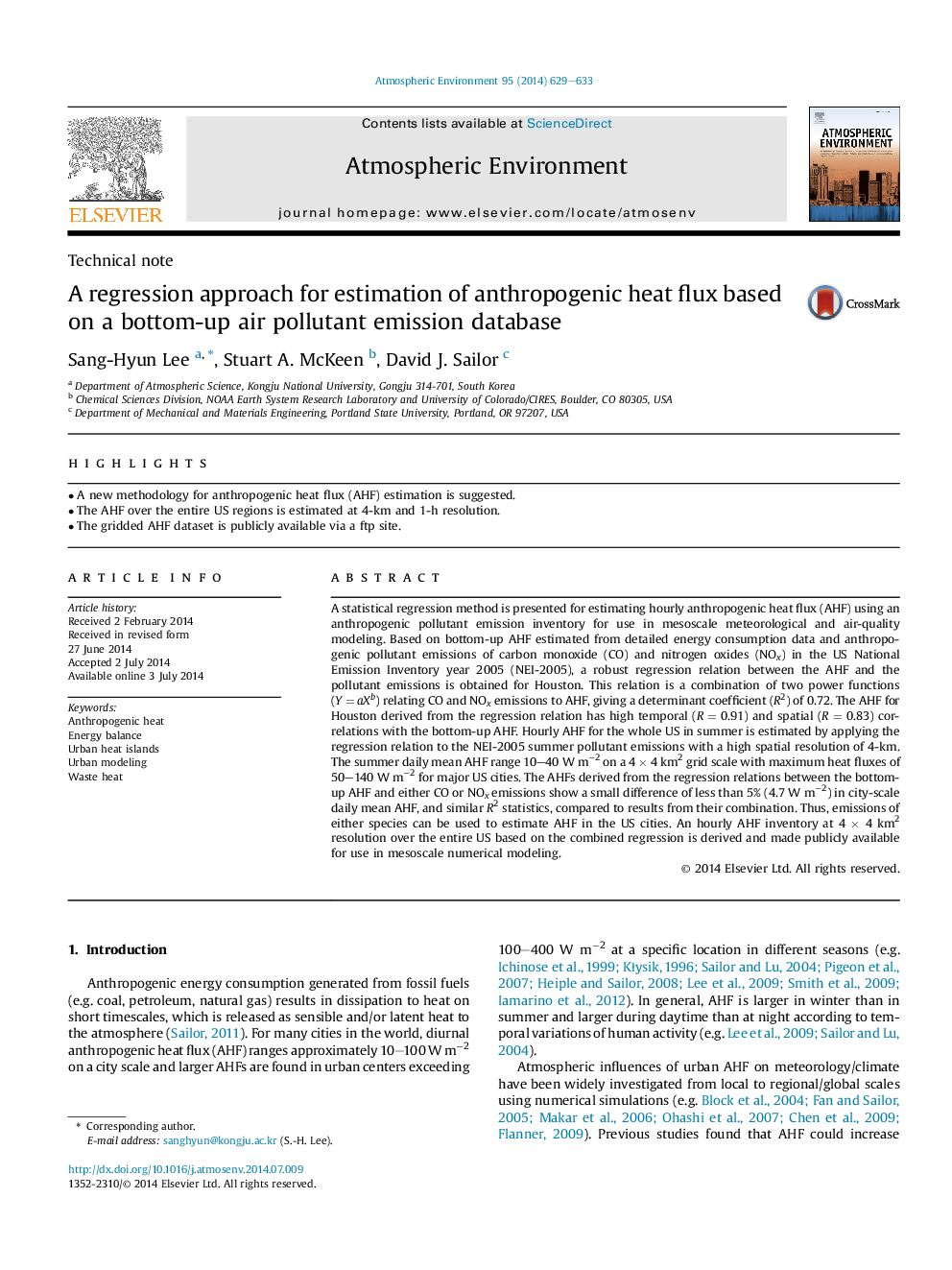| کد مقاله | کد نشریه | سال انتشار | مقاله انگلیسی | نسخه تمام متن |
|---|---|---|---|---|
| 6339326 | 1620376 | 2014 | 5 صفحه PDF | دانلود رایگان |

- A new methodology for anthropogenic heat flux (AHF) estimation is suggested.
- The AHF over the entire US regions is estimated at 4-km and 1-h resolution.
- The gridded AHF dataset is publicly available via a ftp site.
A statistical regression method is presented for estimating hourly anthropogenic heat flux (AHF) using an anthropogenic pollutant emission inventory for use in mesoscale meteorological and air-quality modeling. Based on bottom-up AHF estimated from detailed energy consumption data and anthropogenic pollutant emissions of carbon monoxide (CO) and nitrogen oxides (NOx) in the US National Emission Inventory year 2005 (NEI-2005), a robust regression relation between the AHF and the pollutant emissions is obtained for Houston. This relation is a combination of two power functions (YÂ =Â aXb) relating CO and NOx emissions to AHF, giving a determinant coefficient (R2) of 0.72. The AHF for Houston derived from the regression relation has high temporal (RÂ =Â 0.91) and spatial (RÂ =Â 0.83) correlations with the bottom-up AHF. Hourly AHF for the whole US in summer is estimated by applying the regression relation to the NEI-2005 summer pollutant emissions with a high spatial resolution of 4-km. The summer daily mean AHF range 10-40Â WÂ mâ2 on a 4Â ÃÂ 4Â km2 grid scale with maximum heat fluxes of 50-140Â WÂ mâ2 for major US cities. The AHFs derived from the regression relations between the bottom-up AHF and either CO or NOx emissions show a small difference of less than 5% (4.7Â WÂ mâ2) in city-scale daily mean AHF, and similar R2 statistics, compared to results from their combination. Thus, emissions of either species can be used to estimate AHF in the US cities. An hourly AHF inventory at 4Â ÃÂ 4Â km2 resolution over the entire US based on the combined regression is derived and made publicly available for use in mesoscale numerical modeling.
Journal: Atmospheric Environment - Volume 95, October 2014, Pages 629-633